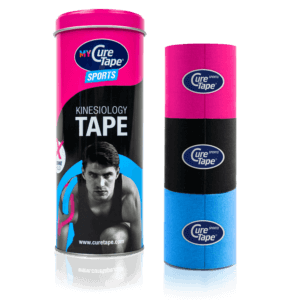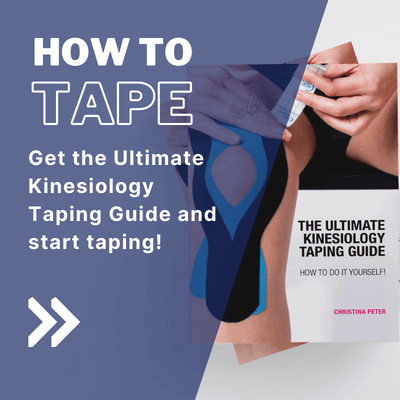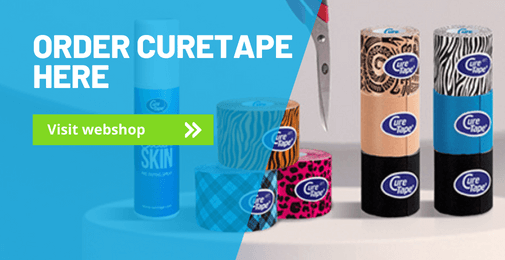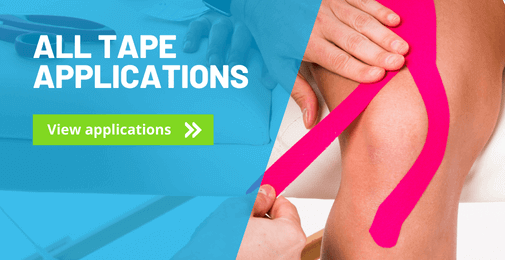Golfer’s elbow is characterised by pain on the inner side of the elbow, at the bony protrusion where the tendon connects with the bone. This is an irritation of the tendon insertion of the flexor muscles of the forearm caused by strain. Tensing the muscles of the forearm and the fingers can be painful. You may also experience a pressing sensation on the inside of the elbow, for example when you lift a chair and the backs of your hands point upwards. This taping application can help to relieve the irritated tendon insertions and overworked muscles.
How to tape a golfer’s elbow
Tips for a good golfer’s elbow taping application:
- Is the cause of the complaint or pain clear?
- Check if there any contraindications for not taping.
- Before you start taping, carefully read the instructions.
- Choose a colour of tape, any colour that fits your mood!
- Round of all the edges to prevent peeling.
- Do not stretch the tape at the beginning and the end.
- Rub the tape well for adhesion. Heat activates the adhesive layer.
- Showering or swimming is possible, pat the tape dry after it gets wet. Do not rub it hard.
- It is easier to remove the tape with body or massage oil.

Christina’s advice when taping your arm
In the self-taping instructions, I have chosen taping applications that are easy to apply yourself. In order to make this treatment safe, I give practical tips, which you should take into account before, during and after a tape treatment. They are based on my years of practical experience. If the complaints persist, always consult a therapist or doctor.
Instruction
Tape
Shape:1 customised I-Tape, 1 normal I-Tape.
Number of strips: 2.
Technique: muscle technique (slight pull).
Measuring and cutting the tape
Step 1:
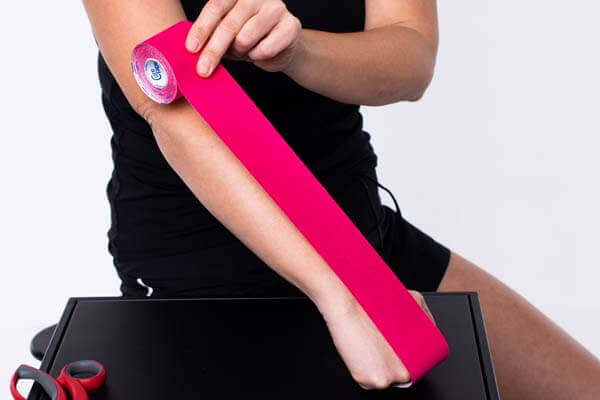
Step 2:
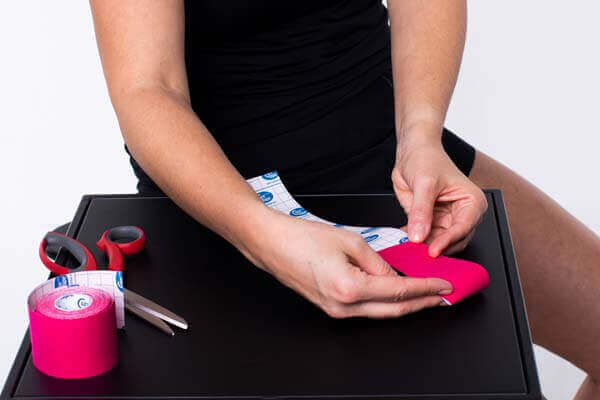
Step 3:
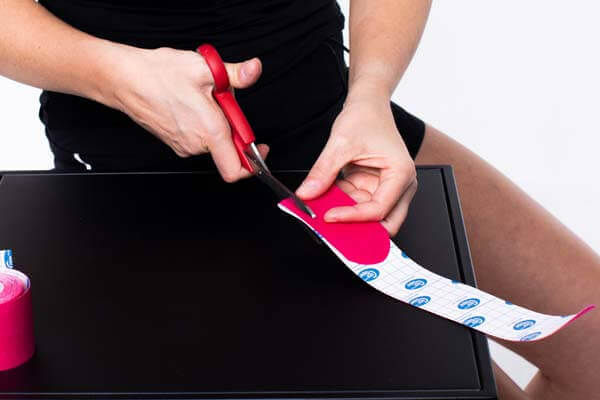
Step 4:
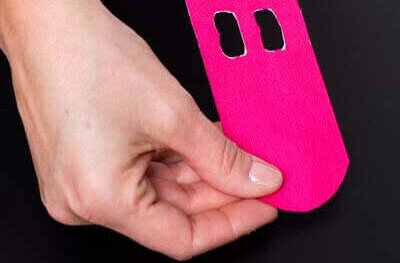
- Sit at a table and measure the first tape in a prone position from the back of the hand, to above the inside of the elbow, making a fist with the elbow extended.
- To apply the tape, fold one end in half and cut two holes at the level of the fold.
- For the second tape, measure the distance from the elbow to the centre of the inside of the forearm.
Applying the tape
Step 1:
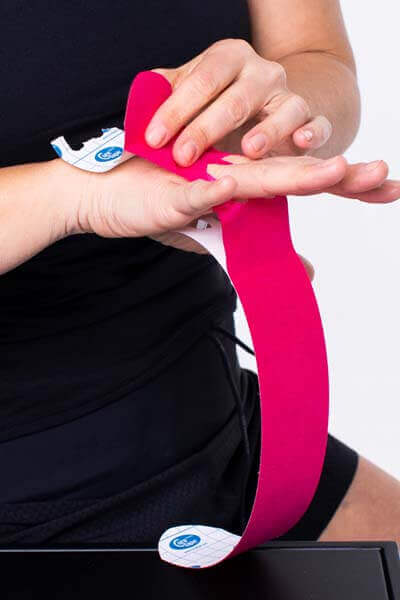
Step 2:
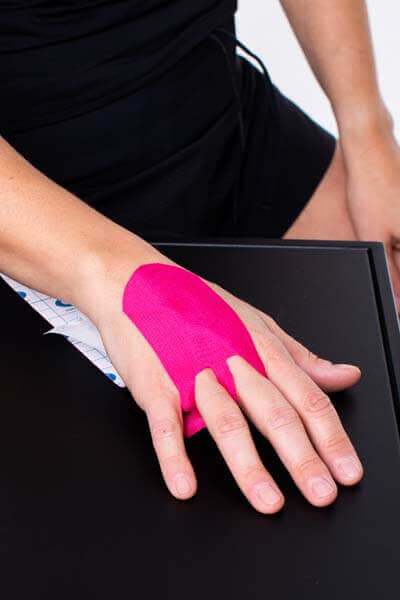
Step 3:
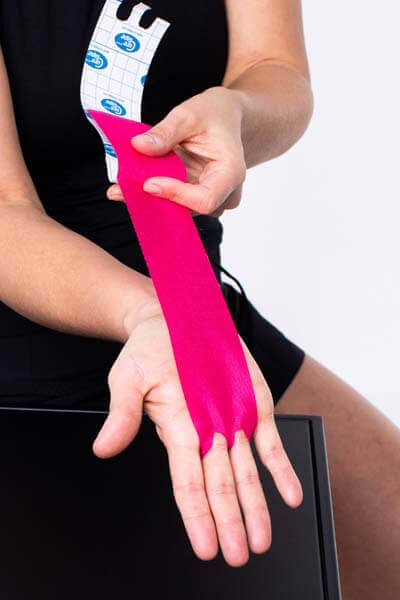
Step 4:
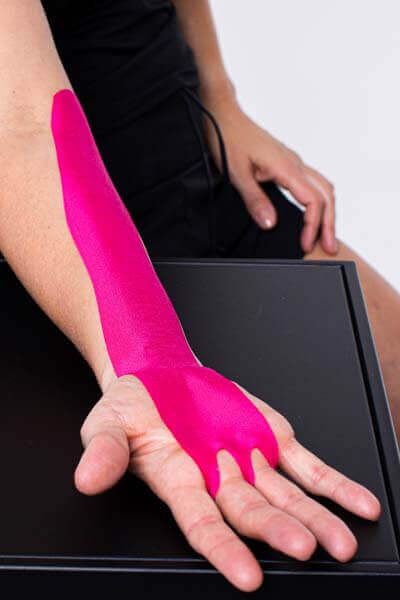
Step 5:
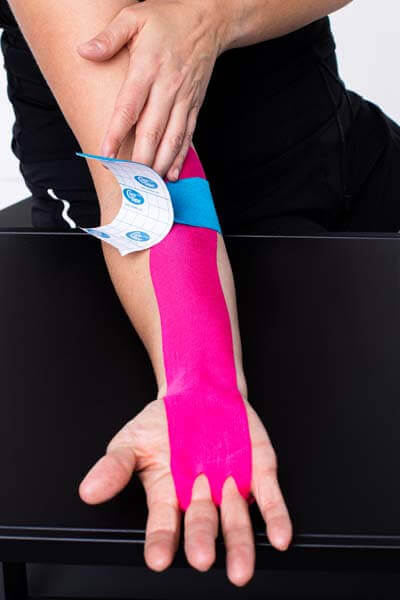
Step 6:
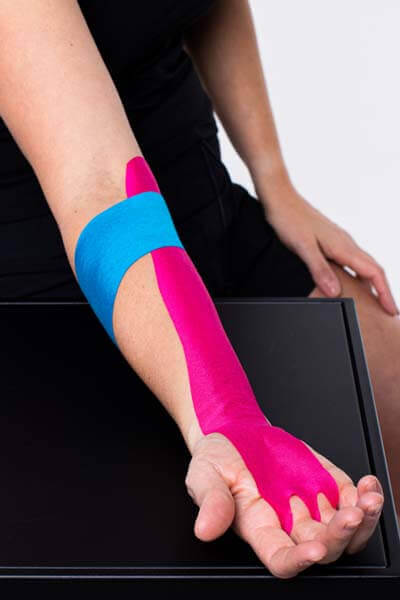
- Place the base of the tape on the underside of the heel without stretching.
- Loosen the release paper up to the last centimetre. Stretch your sore leg a little and stretch the tip of your foot towards you.
- Apply the tape with a good stretch and without folds, over the Achilles tendon. Reduce the stretch on the tape from the middle of the calf and finish without stretching at the back of the knee.
- Do not let the tape end in the hollow of the knee. The skin in this area is very sensitive and can be irritated by the tape.
- Fix the tape by rubbing it firmly.
Popular products to tape your foot
-
MYCureTape® – 3 Rolls Kinesiology Tape – Value Pack
-20%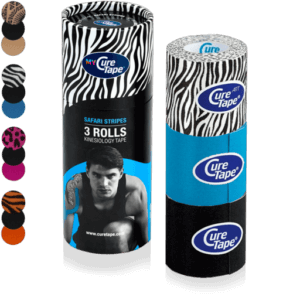 $21.56
In stockSelect options This product has multiple variants. The options may be chosen on the product page
$21.56
In stockSelect options This product has multiple variants. The options may be chosen on the product page -
Book: The Ultimate Kinesiology Taping Guide
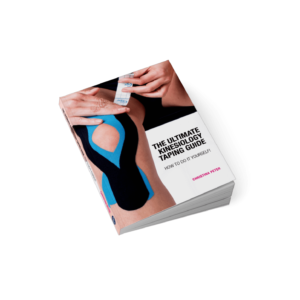 $29.95
In stockAdd to cart
$29.95
In stockAdd to cart -
CureTape® Ultimate Self-Tape Starter Kit
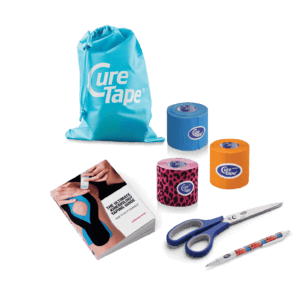 $87.95
Out of stockRead more
$87.95
Out of stockRead more
Learn how to tape
- 30 taping instructions for common injuries that taping can help you with
- 176 pages of clear written instructions
- 200 step-by-step instructions accompanied by photo’s, illustrations and scannable video’s through QR codes
What are you waiting for? Order your copy today!
*This book is intended for people who want to tape an injury or complaint themselves. If uncertain about the complaint, consult a physiotherapist.
THYSOL is the manufacturer of the kinesiology tape brand CureTape. As CureTape, we have been training and supplying professionals for almost 25 years. And consumers now know how to find us too! By manufacturing all our tapes in our own factory, we can guarantee the best quality!
Please note that the indicated tape applications and information on our website about the possibilities with kinesiology tape have not yet been scientifically proven. The statements and examples mentioned are based on long-term experiences of patients and trained therapists.
Contraindications not to tape: pregnancy, open wounds, broken bones, unexplained complaints, allergies and skin diseases, use of medication such as blood thinners, thrombosis and fever. Always apply tape in consultation with a specialist.

